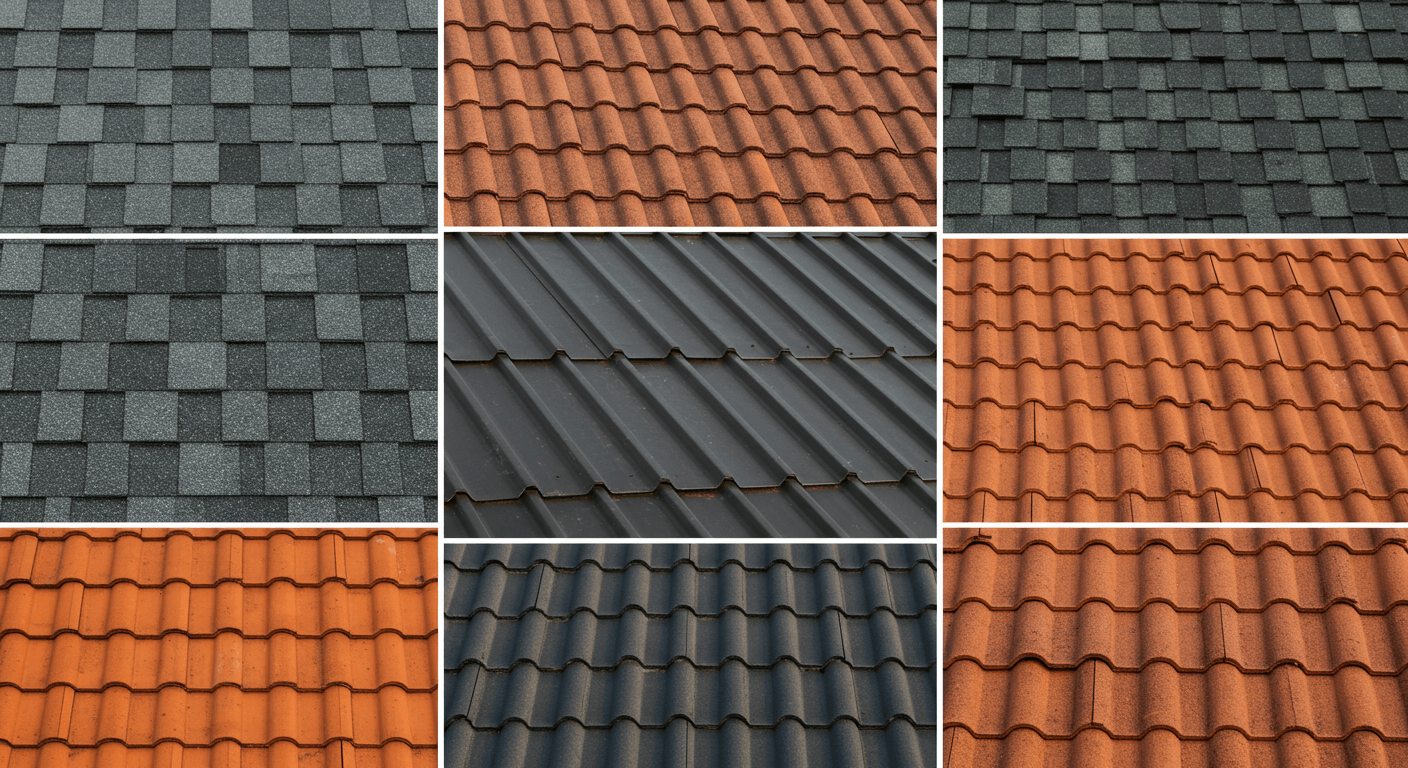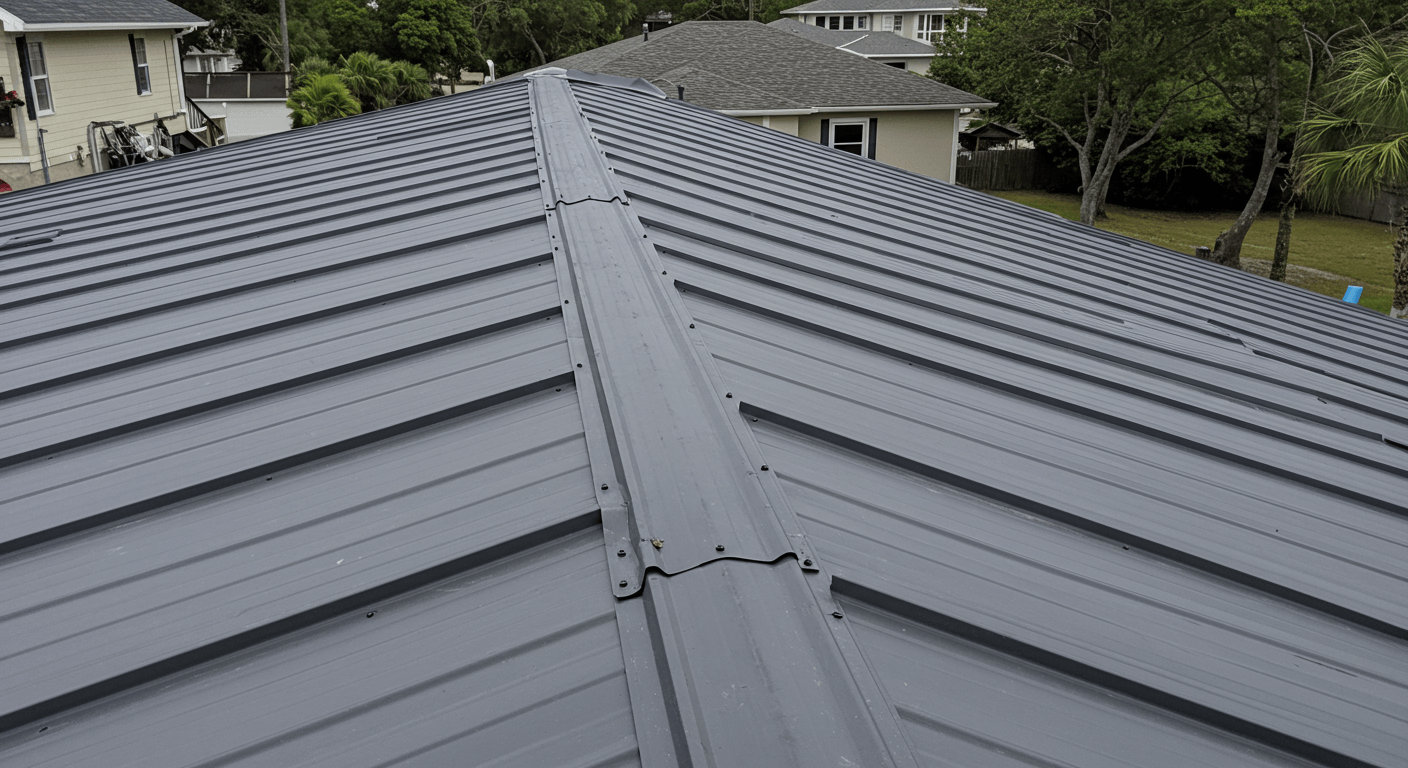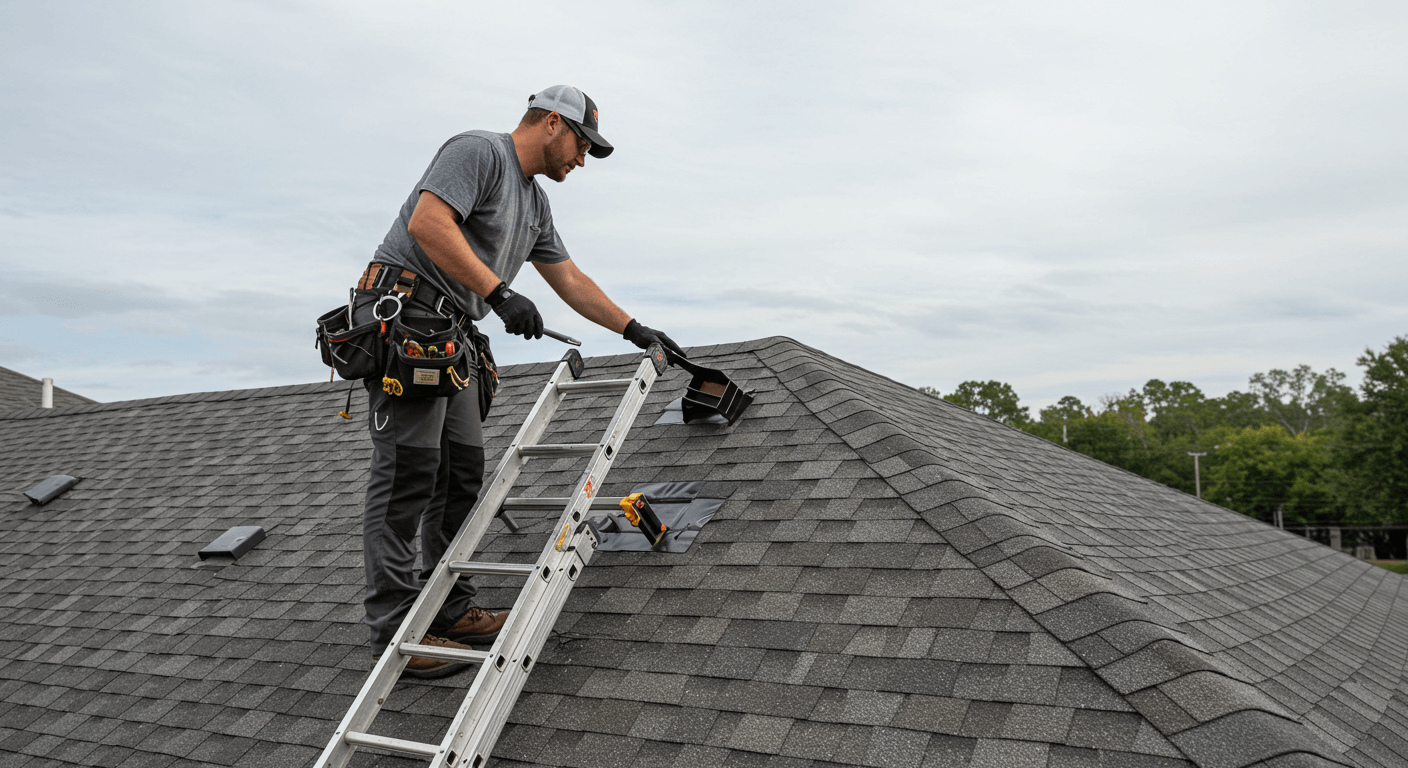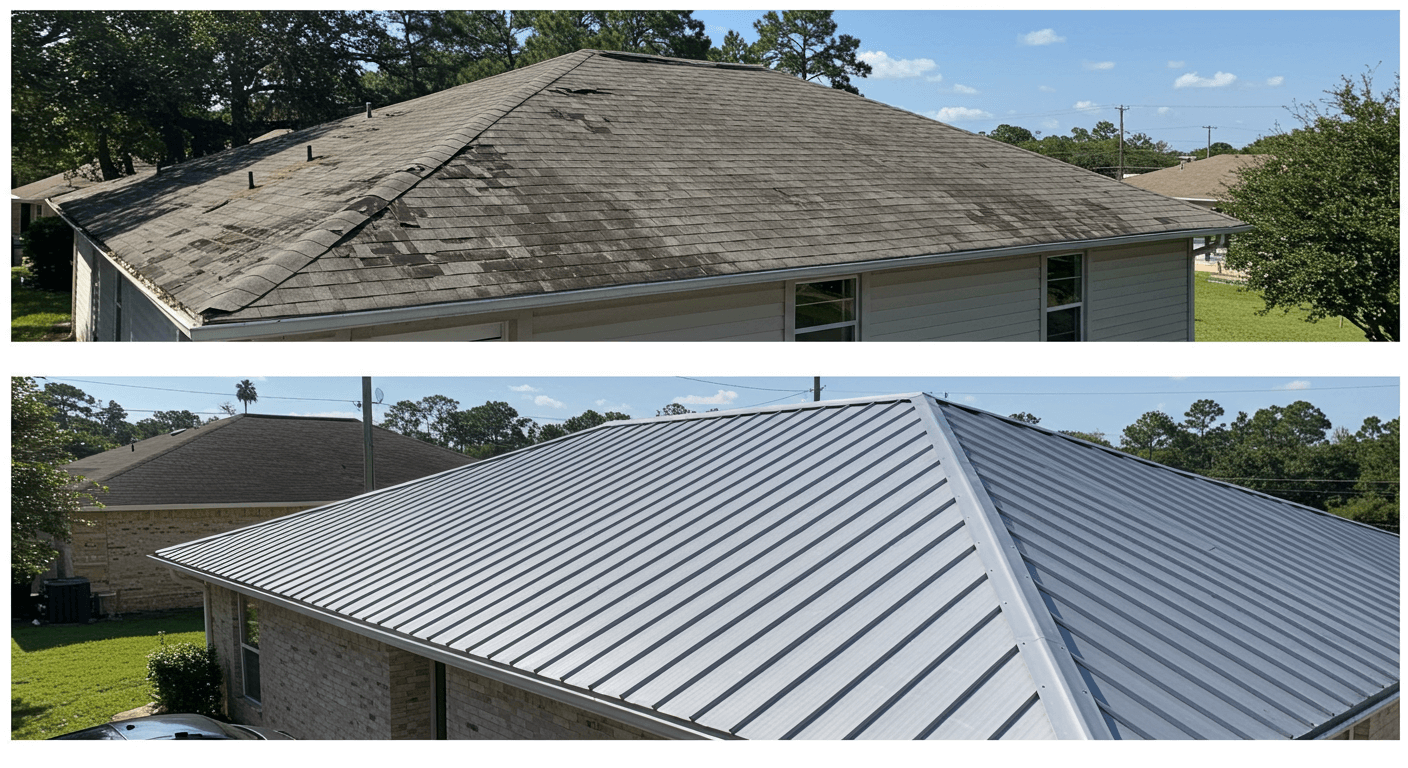Is your Tampa home’s roof showing signs of wear and tear? Maybe you’ve noticed missing shingles after our last big storm, or perhaps that water stain on your ceiling is getting bigger. Whatever the case, if you’re considering a roof replacement in Tampa, you’re in the right place.
Tampa’s unique climate creates special challenges for homeowners. Between scorching summers, hurricane season threats, and our salty coastal air, roofs in our area take quite a beating. That’s why having the right information before starting your roof replacement project is so important.
Why Tampa Homes Need Specialized Roof Replacement Solutions
Living in Tampa means your roof faces challenges that homeowners in other parts of the country don’t have to worry about. Our specific climate conditions require special consideration when planning a roof replacement.
Tampa’s Unique Climate Challenges
Tampa roofs deal with:
- Intense UV exposure – With over 240 sunny days per year, Tampa roofs face extreme UV degradation that breaks down roofing materials faster than in northern climates.
- Hurricane threats – Tampa sits in a high-velocity hurricane zone, requiring roofing systems that can withstand powerful winds and driving rain.
- High humidity and rainfall – Our average annual rainfall of 50+ inches and high humidity levels create perfect conditions for mold, mildew, and algae growth on roofs.
- Salt air exposure – Homes closer to Tampa Bay or the Gulf face additional challenges from salt air, which can corrode certain roofing components.
These factors mean that a roof that might last 25-30 years in other parts of the country might only last 15-20 years in Tampa. That’s why choosing the right materials and installation methods for roof replacement in Tampa is crucial for long-term performance.
Signs Your Tampa Home Needs Roof Replacement
Not sure if you need a complete roof replacement or just repairs? Here are some clear indicators that it’s time to consider a new roof:
Age-Related Warning Signs
- Your asphalt shingle roof is 15-20 years old – Even with proper maintenance, most asphalt shingle roofs in Tampa reach the end of their useful life around this age due to our harsh climate.
- Your tile roof is 20-25 years old – While tile roofs generally last longer, the underlayment beneath the tiles often deteriorates faster in our climate.
- Your metal roof is 25-30 years old – Metal roofs have excellent longevity in Tampa, but even they have a lifespan.
Visible Damage Indicators
- Missing, cracked, or curling shingles – These are signs that your roofing materials are failing.
- Granules in gutters – If you’re finding large amounts of granules from asphalt shingles in your gutters, your roof is deteriorating.
- Sagging roof deck – This indicates structural problems that require immediate attention.
- Daylight visible through roof boards – If you can see light coming through your roof boards from your attic, water can get in too.
Interior Warning Signs
- Water stains on ceilings or walls – These often indicate roof leaks.
- Unexplained increases in energy bills – A failing roof can lead to poor insulation and ventilation.
- Mold or mildew growth in your attic – This suggests moisture problems that may be related to roof failure.
If you’re noticing several of these signs, it’s time to contact reputable roofing contractors in Tampa for an assessment. Many offer free roof inspections to help you determine if replacement is necessary.
Tampa Roof Replacement: Material Options for Our Climate

Choosing the right roofing material is one of the most important decisions you’ll make when replacing your roof in Tampa. Each material has its own advantages and considerations, especially given our unique climate challenges.
Asphalt Shingles: Popular and Practical
Asphalt shingles remain the most common roofing material for roof replacement in Tampa, and for good reason:
Pros:
- More affordable than other options
- Available in various colors and styles
- Many brands offer algae-resistant options specifically for Florida
- Good manufacturers offer warranties of 25-30 years
- Easier and less expensive to repair than some other materials
Cons:
- Shorter lifespan in Tampa’s climate (typically 15-20 years)
- Less wind-resistant than metal or tile options
- Can develop algae and mold issues in our humid climate
- Not as energy-efficient as some alternatives
If choosing asphalt shingles for your Tampa roof replacement, look for:
- Impact-resistant shingles (Class 4 rating)
- Wind ratings of 130+ mph
- Algae-resistant technology
- Cool roof options that reflect more heat
Metal Roofing: Durable Hurricane Protection

Metal roofing has become increasingly popular for roof replacement in Tampa due to its exceptional durability and hurricane resistance:
Pros:
- Outstanding longevity (40-70 years)
- Excellent wind resistance (up to 160 mph when properly installed)
- Highly energy-efficient, reflecting heat away from your home
- Low maintenance requirements
- Environmentally friendly and recyclable
- Available in various styles that can mimic other materials
Cons:
- Higher initial investment than asphalt shingles
- Installation requires specialized expertise
- Can be noisy during heavy rain (though proper installation minimizes this)
For Tampa homes, standing seam metal roofs offer the best performance, with hidden fasteners that provide superior water resistance and wind uplift protection.
Concrete and Clay Tiles: Classic Florida Style
Tile roofs are a classic Florida look and offer excellent durability:
Pros:
- Very long lifespan (50+ years for the tiles themselves)
- Excellent fire resistance
- Good wind resistance when properly installed
- Natural insulation properties
- Distinctive appearance that adds curb appeal
Cons:
- Heavier weight requires ensuring your home’s structure can support it
- More investment required than asphalt shingles
- Individual tiles can crack from impact
- The underlayment typically needs replacement every 20-25 years, even if the tiles are intact
For Tampa homes, lightweight concrete tiles often provide the best balance of durability and structural compatibility.
Flat/Low-Slope Roofing Options
For portions of your home with a flat or low-slope roof, different materials are required:
TPO (Thermoplastic Olefin):
- Excellent reflectivity for energy efficiency
- Good resistance to UV rays and Tampa’s heat
- Typically lasts 20-30 years with proper installation
Modified Bitumen:
- Multi-layer protection
- Good for Tampa’s rainy conditions
- Typically lasts 15-20 years
When selecting materials for your roof replacement in Tampa, consider not just the upfront investment but also longevity, energy efficiency, and hurricane resistance. The right choice can save you money in the long run through reduced energy costs, fewer repairs, and longer replacement intervals.
Understanding Tampa’s Roofing Codes and Requirements
Roof replacement in Tampa isn’t just about choosing materials and hiring contractors—it also involves navigating local building codes and requirements designed to protect homes in our hurricane-prone region.
Current Tampa Roofing Requirements
If you’re replacing your roof in Tampa, you’ll need to meet these key requirements:
- Wind resistance standards – All new roofs must be designed to withstand winds of at least 115-130 mph (depending on your exact location in Tampa)
- Secondary water barriers – Required under the primary roofing material to provide additional protection against water intrusion
- Roof-to-wall connections – Proper hurricane straps or clips are mandatory to secure your roof to your home’s structure
- Specific nailing patterns – Code-compliant nailing patterns and fastener types must be used
- Product approvals – All materials must have proper Florida product approvals
The Permit Process for Tampa Roof Replacement
Before starting any roof replacement in Tampa, you’ll need:
- A building permit from the City of Tampa
- Documentation of the materials and methods to be used
- Proof that your contractor is properly licensed
- Possible inspections before, during, and after installation
Working with experienced Tampa roofing contractors can make this process much easier, as they’ll be familiar with all the requirements and paperwork. They can handle the permit process for you, ensuring everything meets code requirements.
Insurance Considerations for Tampa Homeowners
Florida has some unique insurance considerations when it comes to roof replacement:
- The 25% Rule – If more than 25% of your roof needs repair within a 12-month period, the entire roof must be brought up to current Florida building code standards
- Wind Mitigation Credits – After your roof replacement, be sure to get a wind mitigation inspection, which can significantly reduce your homeowner’s insurance premiums
- Insurance Coverage – Some insurance companies in Florida have specific age restrictions for roofs, potentially affecting your coverage
Before beginning your roof replacement project, it’s worth checking with your insurance company about any requirements or potential discounts for hurricane-resistant roofing features.
The Roof Replacement Process in Tampa

Understanding what to expect during your roof replacement project helps ensure a smooth process from start to finish.
Initial Assessment and Estimate
The process typically begins with:
- A thorough roof inspection by qualified Tampa roofing contractors
- Documentation of existing issues and areas of concern
- Measurements and calculations of your roof’s dimensions
- Discussion of material options suitable for your home and budget
- A detailed written estimate outlining materials and timeline
Pre-Installation Preparation
Before work begins, several preparatory steps take place:
- Obtaining necessary permits from the City of Tampa
- Ordering and delivering materials to your property
- Scheduling the work crew and equipment
- Protecting your property (landscaping, outdoor furniture, etc.)
- Setting up safety equipment and debris containment systems
The Installation Process
A typical roof replacement in Tampa follows these steps:
- Removal of old roofing – Stripping away the existing roof down to the decking
- Deck inspection and repair – Checking for and replacing any damaged roof decking
- Installation of secondary water barrier – Adding this critical layer of protection required by Tampa building codes
- Drip edge installation – Placing metal edges along roof perimeters to direct water away
- Underlayment application – Installing the base layer that provides additional waterproofing
- Flashing installation – Adding metal pieces at roof joints and penetrations to prevent leaks
- Primary roofing material installation – Applying the shingles, tiles, or metal panels
- Ridge vent and cap installation – Completing the roof with proper ventilation and ridge finishing
- Final cleanup – Thorough removal of all debris and materials from your property
Post-Installation Steps
After your new roof is installed:
- Final inspection by the roofing contractor
- City inspection to ensure code compliance
- Final walkthrough with you to ensure satisfaction
- Provision of warranty documentation
- Wind mitigation inspection for potential insurance discounts
The entire process for a typical Tampa home takes about 1-2 weeks, depending on your home’s size, roof complexity, and weather conditions.
Choosing the Right Tampa Roofing Contractors
Selecting the right contractor is perhaps the most important decision you’ll make for your roof replacement project. Here’s how to find reputable roofing contractors in Tampa:
Essential Credentials to Look For
Verify these crucial qualifications:
- Active Florida roofing contractor license – You can verify this through the Florida Department of Business and Professional Regulation
- Proper insurance coverage – Both liability and workers’ compensation insurance
- Local business presence – A physical address and phone number in the Tampa area
- Manufacturer certifications – These indicate specialized training for specific materials
- Good standing with the Better Business Bureau – Check their rating and any complaint history
- Positive online reviews – Look at Google, Yelp, and other review platforms
Questions to Ask Before Hiring
Before signing any contract, ask potential roofing contractors these important questions:
- “How many years have you been installing roofs in Tampa?”
- “Can you provide references from local customers with similar roofing projects?”
- “Will you be pulling all the necessary permits?”
- “What specific hurricane-resistant features do you include in your installations?”
- “Do you offer any warranty on labor in addition to manufacturer warranties?”
- “How will you protect my property during the installation?”
- “What is your protocol if there’s a weather delay?”
- “Will you provide a detailed written estimate and contract?”
Red Flags to Watch Out For
Be wary of contractors who:
- Offer prices significantly lower than other quotes
- Pressure you to sign immediately
- Ask for full payment upfront
- Can’t provide local references
- Don’t have a physical business address
- Offer to “handle” your insurance claim in questionable ways
- Won’t provide written documentation
Taking the time to find reputable Tampa roofing contractors will pay off with quality installation, proper adherence to building codes, and peace of mind that your new roof will protect your home for years to come.
Value Considerations for Tampa Roof Replacement
When evaluating roof replacement options, consider these long-term value factors:
Energy Efficiency Benefits
A new roof can significantly improve your home’s energy efficiency:
- Reduced cooling costs – Energy-efficient roofing can lower cooling costs by 15-25%
- Improved comfort – Better insulation and ventilation create more consistent indoor temperatures
- Extended HVAC lifespan – Less strain on your air conditioning system means longer equipment life
Insurance Advantages
A new, hurricane-resistant roof can provide insurance benefits:
- Potential premium discounts – Many insurance companies offer reduced rates for homes with wind-resistant roofing features
- Better coverage options – Some insurers offer improved coverage terms for homes with newer roofs
- Reduced claim risk – A quality roof means less chance of filing claims, which can help keep your rates stable
Home Value Improvement
Roof replacement typically offers good return on investment:
- Increased resale value – A new roof typically returns 60-70% of its cost in increased home value
- Improved curb appeal – A new roof dramatically enhances your home’s appearance
- Faster home sales – Homes with new roofs typically sell more quickly than those needing roof replacement
Long-Term Durability Factors
Consider these elements that affect how long your new roof will last:
- Material quality – Higher-grade materials generally last longer in Tampa’s climate
- Installation expertise – Proper installation is crucial for maximum lifespan
- Maintenance requirements – Some materials require less maintenance over time
- Climate resistance – Materials specifically designed for Florida’s climate perform better long-term
While roof replacement requires a significant investment, choosing quality materials and experienced Tampa roofing contractors will provide better long-term value than cutting corners to save on initial costs.
Maintaining Your New Roof in Tampa’s Climate
Once you’ve invested in a roof replacement, proper maintenance is key to maximizing its lifespan in Tampa’s challenging climate.
Seasonal Maintenance Checklist
Spring (March-May):
- Clear debris from roof surfaces and gutters
- Check for winter storm damage
- Look for signs of mold or algae growth
- Trim overhanging tree branches
Summer (June-August):
- Inspect for hurricane season readiness
- Check attic ventilation is working properly
- Look for signs of UV damage or deterioration
- Ensure gutters and downspouts are clear for summer storms
Fall (September-November):
- Clean gutters after hurricane season
- Check for storm damage
- Inspect roof penetrations and flashing
- Look for signs of wildlife trying to enter for winter
Winter (December-February):
- Clear debris from roof and gutters
- Check for water stains in attic or ceilings
- Inspect for wind damage from winter fronts
- Look for loose materials that could become problems
Professional Inspection Schedule
For maximum protection, schedule professional inspections:
- After any major storm event
- At least once per year for routine assessment
- Before hurricane season begins
- Any time you notice potential issues
Extending Your Roof’s Lifespan
These additional tips can help extend the life of your Tampa roof:
- Keep trees trimmed away from your roof
- Ensure proper attic ventilation to reduce heat and moisture buildup
- Address small issues promptly before they become major problems
- Clean algae or mold growth according to manufacturer recommendations
- Consider periodic professional cleaning for tile or metal roofs
With proper maintenance, your new roof can provide reliable protection for your Tampa home throughout its expected lifespan.
Frequently Asked Questions About Roof Replacement in Tampa
How long does a roof replacement take in Tampa?
Most residential roof replacements in Tampa take 1-2 weeks from start to finish, including permit acquisition, material delivery, installation, and final inspection. Weather conditions, roof size, and complexity can affect this timeline.
What is the best time of year for roof replacement in Tampa?
The dry season (typically November through May) is generally the best time for roof replacement in Tampa. This avoids the daily afternoon thunderstorms of summer and the peak of hurricane season. However, reputable Tampa roofing contractors work year-round and have protocols for protecting your home if rain occurs during installation.
Will my insurance cover roof replacement?
Insurance typically covers roof replacement if the damage was caused by a covered peril like wind, hail, or fire. Normal wear and tear or age-related deterioration is generally not covered. Florida insurance policies have specific provisions regarding roof age and condition, so it’s important to review your policy details.
What is the 25% rule for Florida roofs?
Florida’s “25% rule” states that if more than 25% of your roof needs repair within a 12-month period, the entire roof must be brought up to current Florida building code standards. For many older homes in Tampa, this often means a complete roof replacement rather than partial repairs.
Are there programs to help pay for a new roof in Tampa?
Yes, Tampa residents may qualify for several assistance programs including the SELF (Solar Energy Loan Fund) program, Wind Mitigation credits through insurance, and various financing options offered by roofing companies. Additionally, energy-efficient roofing materials may qualify for tax incentives.
How can I tell if my roof has storm damage?
Signs of storm damage include:
- Missing, cracked, or lifted shingles or tiles
- Granules from asphalt shingles in gutters or downspouts
- Dents in metal roofing or flashing
- Water stains on ceilings or walls that appear after a storm
- Leaks during rainfall
- Visible light through the roof when in the attic
If you suspect storm damage, it’s best to have a professional roof inspection from qualified Tampa roofing contractors.
Protect Your Tampa Home with Quality Roof Replacement

Your roof is your home’s first line of defense against Tampa’s challenging weather conditions. Investing in quality roof replacement with the right materials and experienced Tampa roofing contractors provides:
- Better protection against hurricanes and storms
- Improved energy efficiency and lower cooling costs
- Enhanced curb appeal and home value
- Peace of mind knowing your home is secure
- Potential insurance savings through wind mitigation features
Don’t wait until leaks or storm damage force you into emergency repairs. If your roof is showing signs of age or wear, contact reputable roofing contractors in Tampa for an assessment and explore your roof replacement options.
Ready to get started with your Tampa roof replacement project? Contact us today for a free consultation and estimate. Our team of experienced professionals specializes in hurricane-resistant roofing solutions tailored to Tampa’s unique climate challenges.
This guide to roof replacement in Tampa was last updated in April 2025 to reflect current building codes, material options, and best practices for Florida homeowners.
